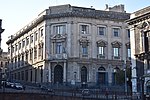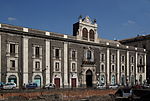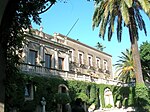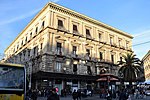Amphitheatre of Catania
Buildings and structures completed in the 2nd centuryBuildings and structures completed in the 3rd centuryBuildings and structures in CataniaRoman amphitheatres in ItalyRoman sites of Sicily
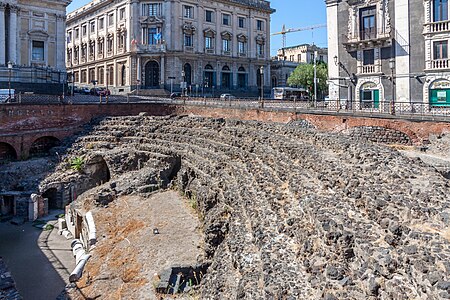
The Amphitheatre of Catania is a Roman amphitheatre in Catania, Sicily, southern Italy, built in the Roman Imperial period, probably in the 2nd century AD, on the northern edge of the ancient city at the base of the Montevergine hill. Only a small section of the structure is now visible, below ground level, to the north of Piazza Stesicoro. This area is now the historic centre of the city, but was then on the outskirts of the ancient town and also occupied by the necropolis of Catania. The structure is part of the Parco archeologico greco-romano di Catania.
Excerpt from the Wikipedia article Amphitheatre of Catania (License: CC BY-SA 3.0, Authors, Images).Amphitheatre of Catania
Via Alessandro Manzoni, Catania Centro storico
Geographical coordinates (GPS) Address External links Nearby Places Show on map
Geographical coordinates (GPS)
| Latitude | Longitude |
|---|---|
| N 37.50737 ° | E 15.08531 ° |
Address
Anfiteatro Romano
Via Alessandro Manzoni
95121 Catania, Centro storico
Sicily, Italy
Open on Google Maps
